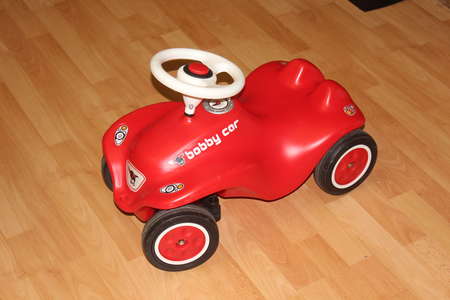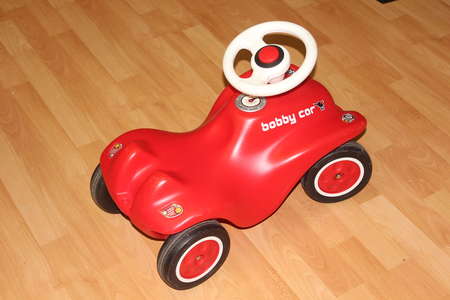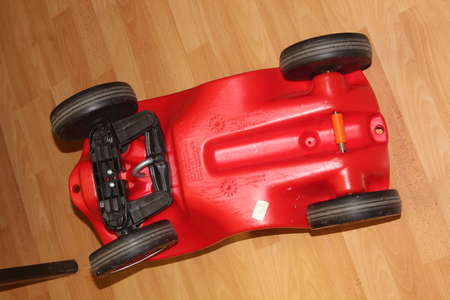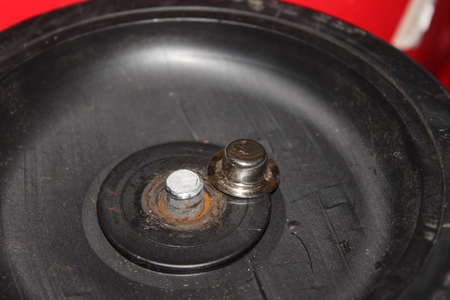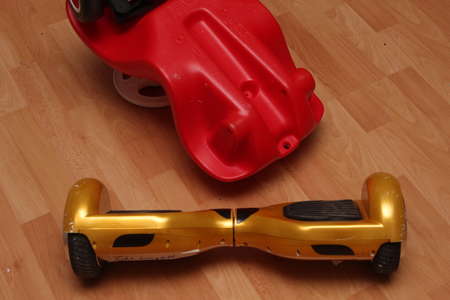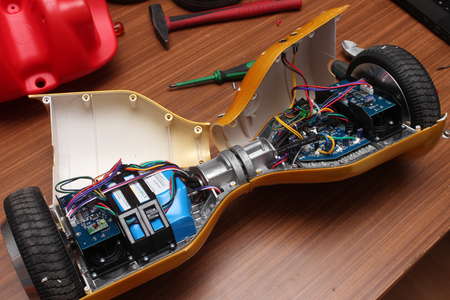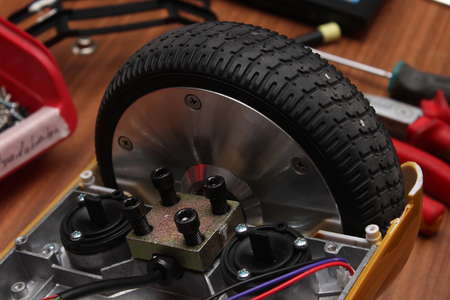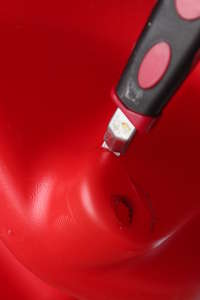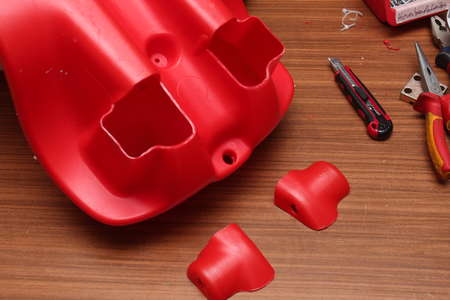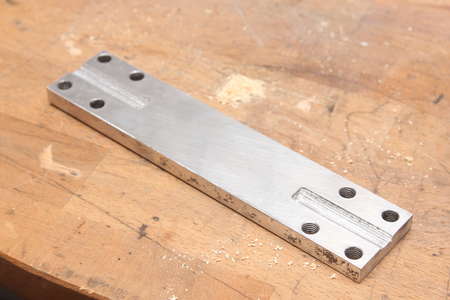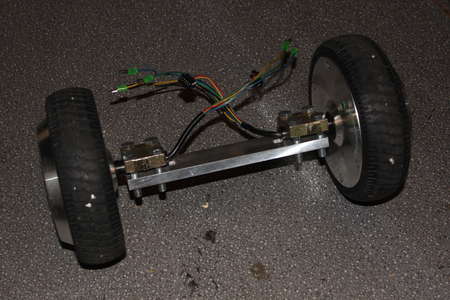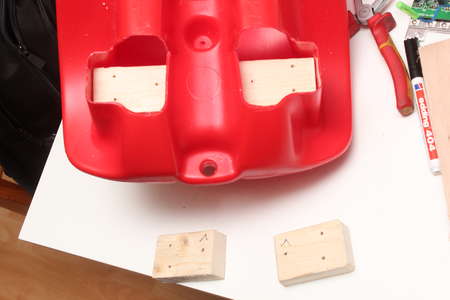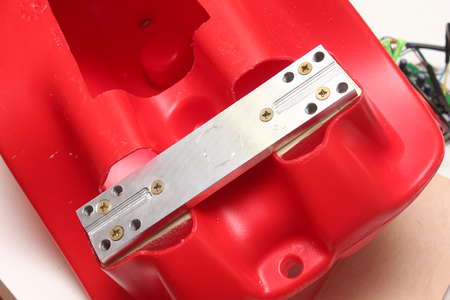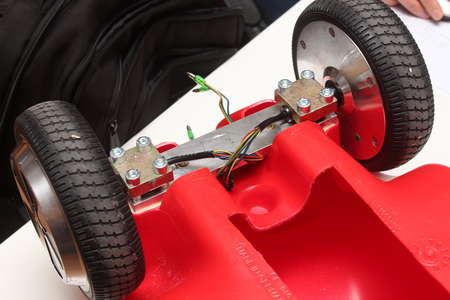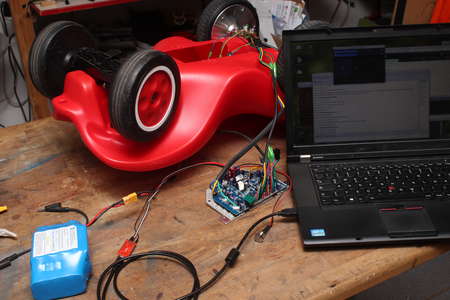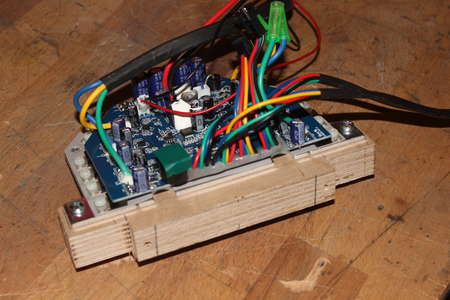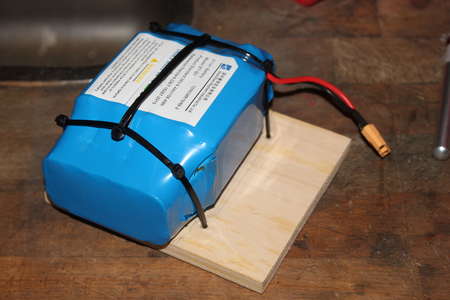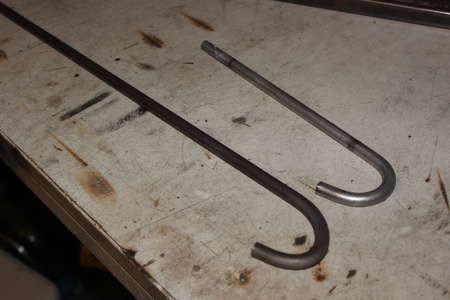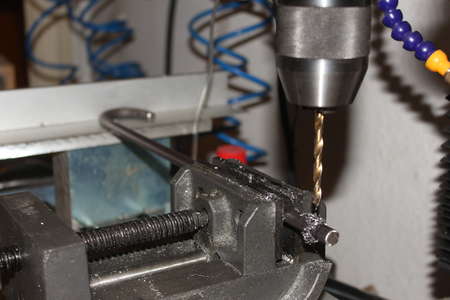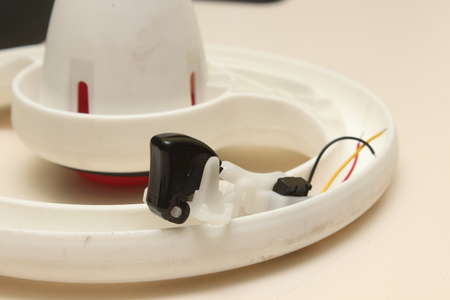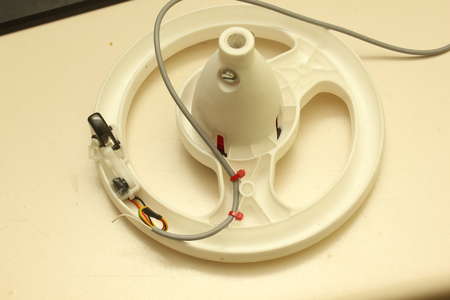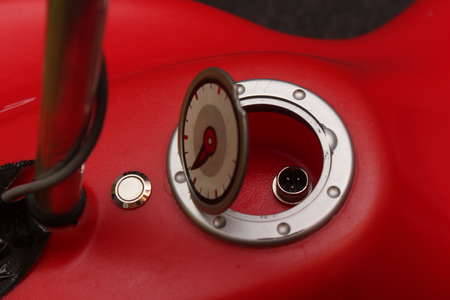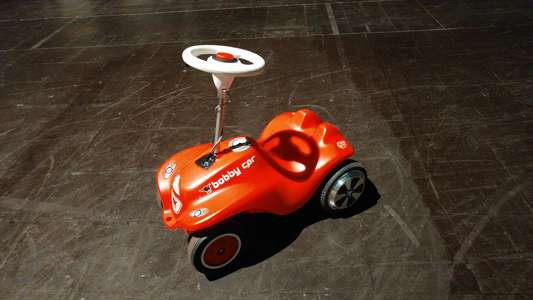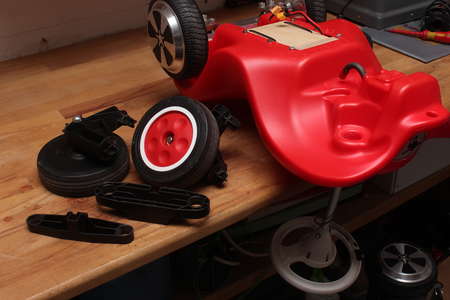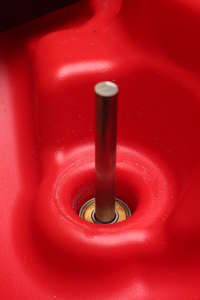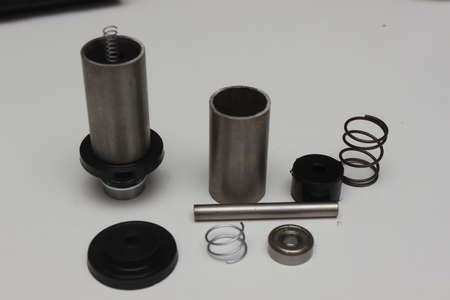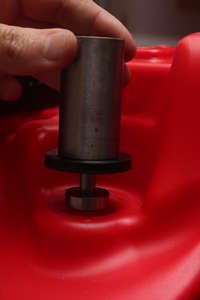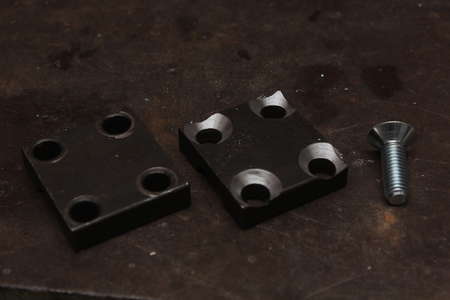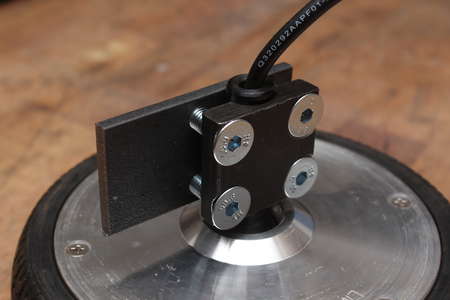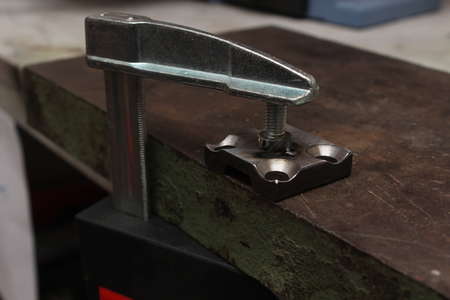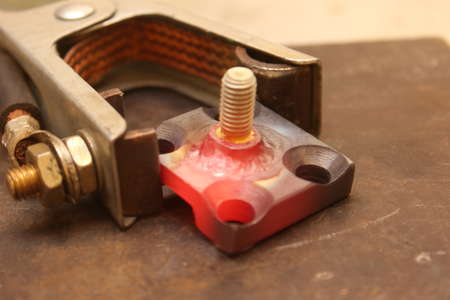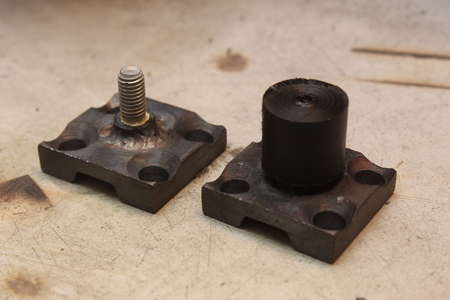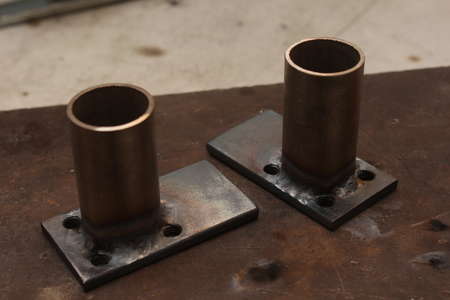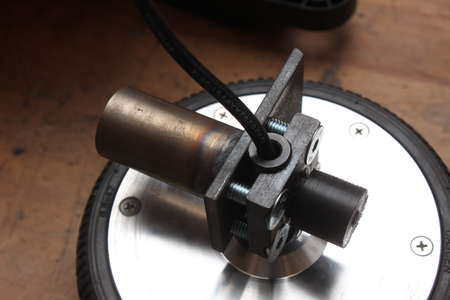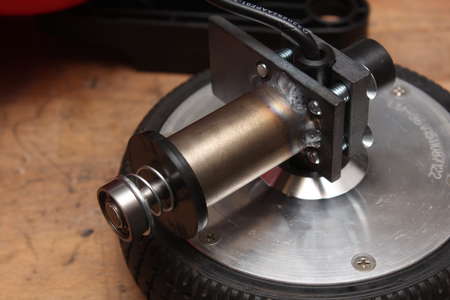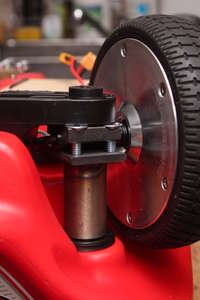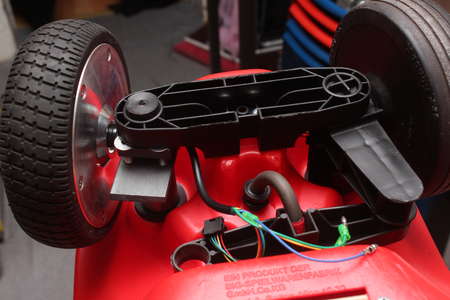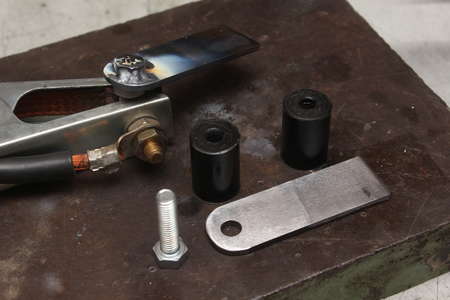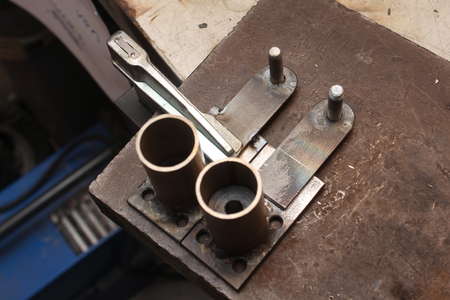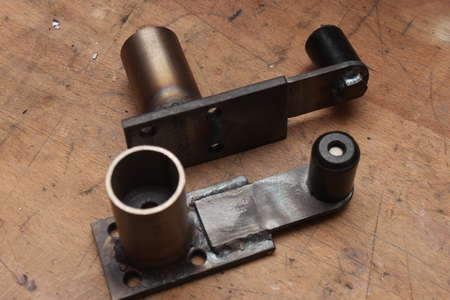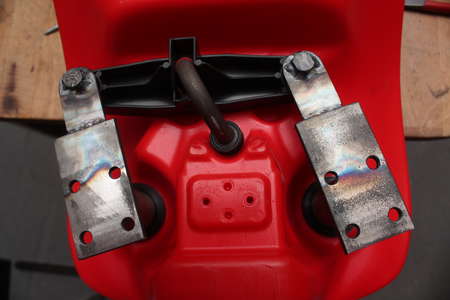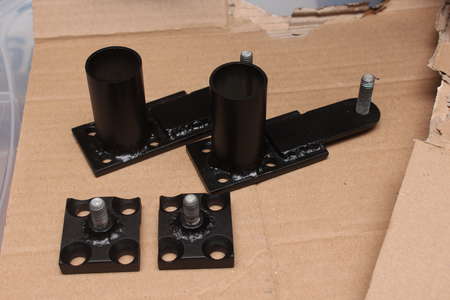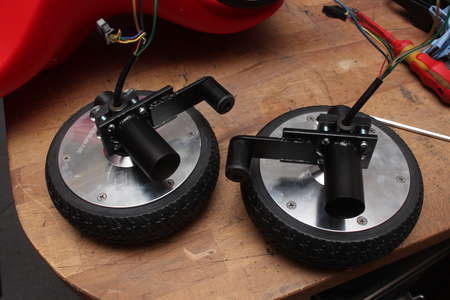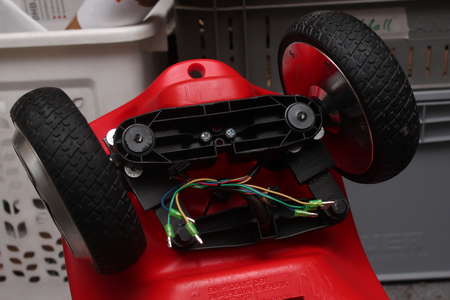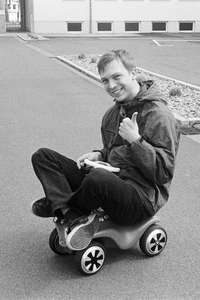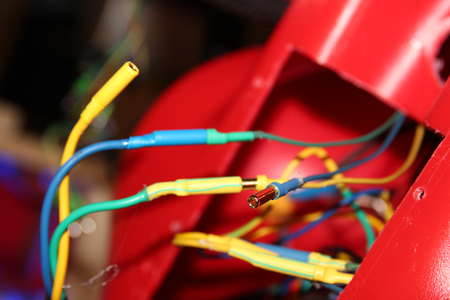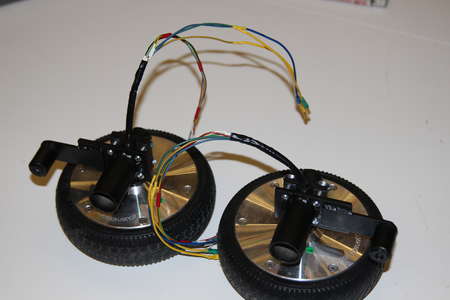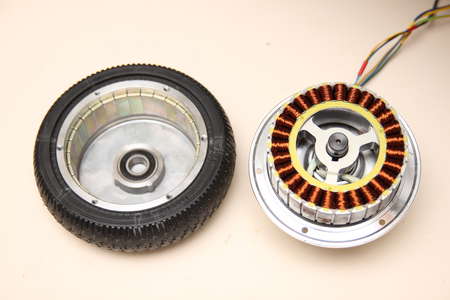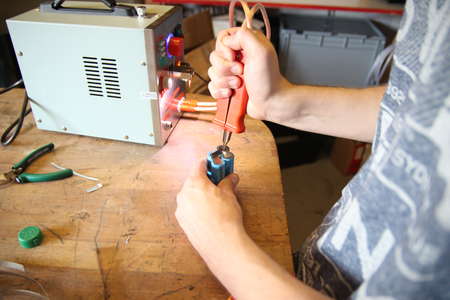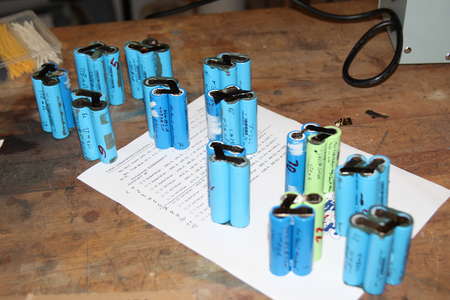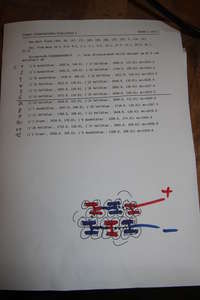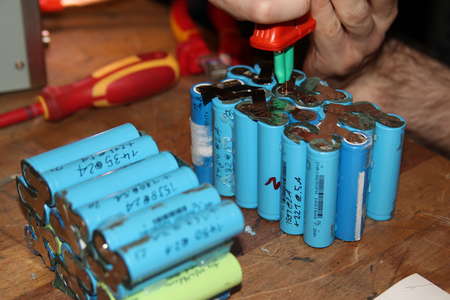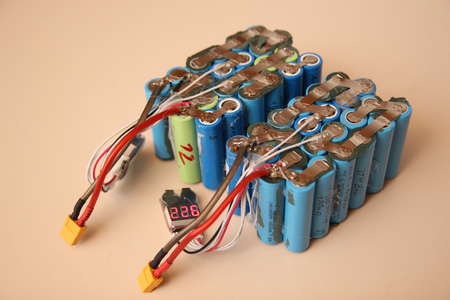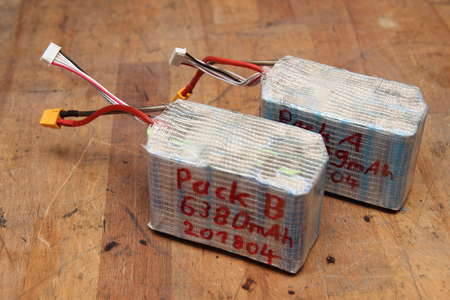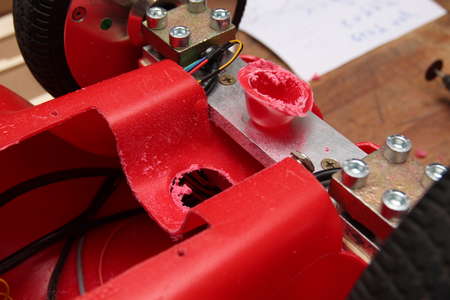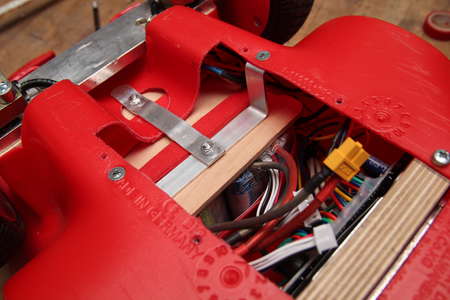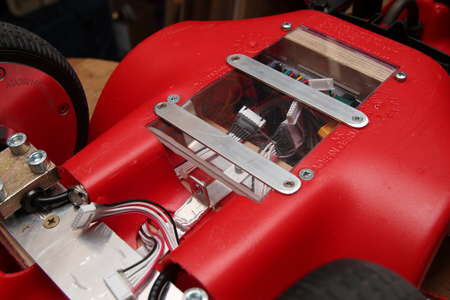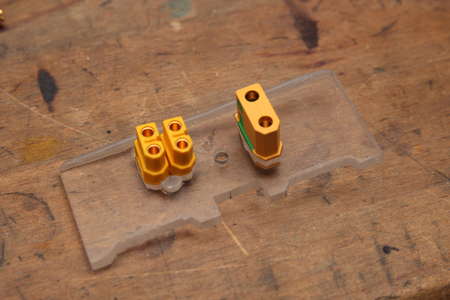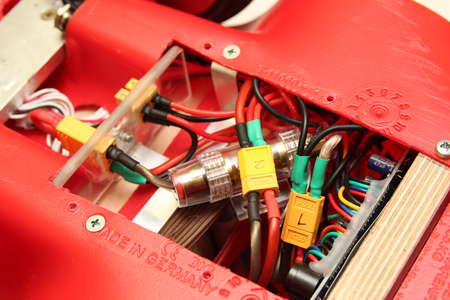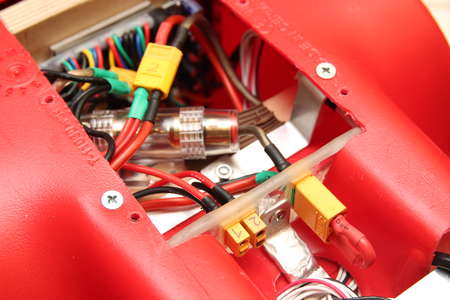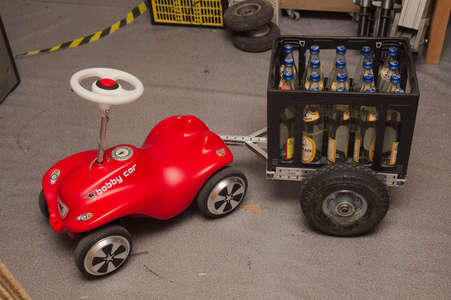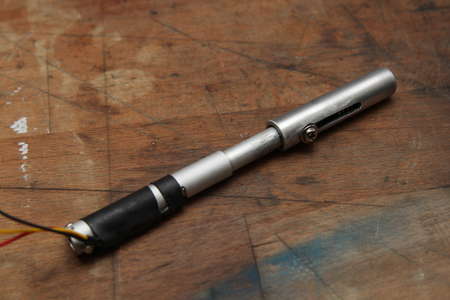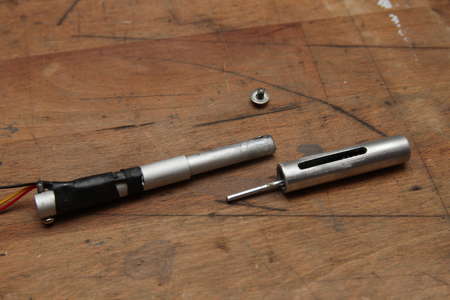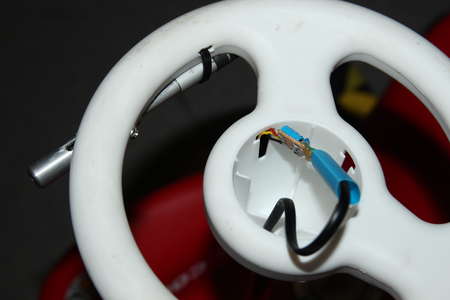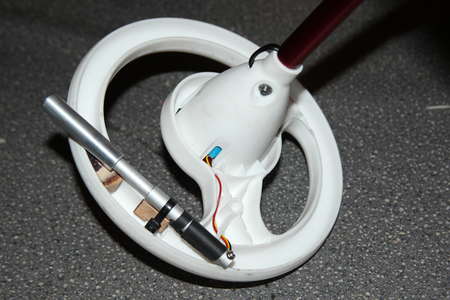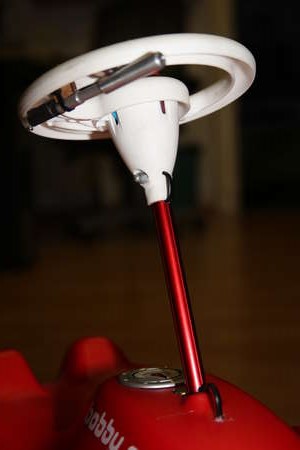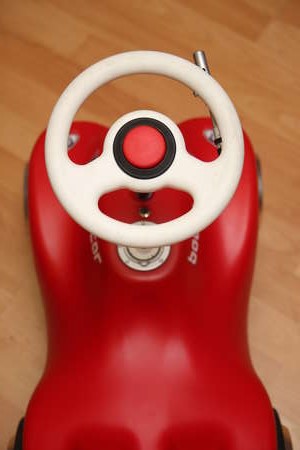E-Bobby Car
November 2017
Related Pages
Kürzlich kamen wir sehr günstig an eine große Menge defekter Hoverboards und kurz danach noch an ein paar ungeprüfte Retouren. Ein Hoverboard hab ich mir funktionsfähig gemacht, aus dem Rest wird großartiges entstehen.
Bei den Hoverboards/Balance Scooter sind die Motoren in den Rädern verbaut. Dadurch ist keine komplizierte Mechanik nötig, um was Fahrendes zu bauen. Als ich dann so ein ausgeschlachtetes Rad in der Hand hielt fiel mir direkt ein Bobbycar ein. “Ob das nicht einfach direkt untendrunter passt?”, fragte ich mich. Es passte! Sonst würd ich das jetzt nicht schreiben.
Das BIG Bobby Car bekam ich spontan durch Ebay Kleinanzeigen von aus der Nähe. Die Dame wünschte mir, als ich ihr die 15 Euro in die Hand drückte, “Viel Spass”. Ob sie wusste was ich vorhab? o.0
Nun, Bilder. Links, Rechts, Unten… Du weisst wie son Bobby Car aussieht, woll?
Selbstverständlich hab ich vorher recherchiert, ob die Räder auch passen. Die Hoverboardreifen, zumindest die kleineren, sind mit 16,5cm nur 1cm im Durchmesser größer. Um die Hinterreifen vom Bobby Car abzunehmen muss die Metallkappe auf einer der Seiten abgenommen werden. Dazu mit einer Zange die Kappe oval drücken, dass die Klippsis nicht mehr in die Kerbe der Welle greifen. Danach kann die Stange rausgezogen werden und beide Reifen sind ab.
Hier das Hoverboard, dessen Innereien verwendet werden.
Kurzer Exkurs, für die jenigen, die son Teil noch nicht von innen gesehn haben: Außen befinden sich die Reifen. Der Motor ist ein Brushless Außenläfter. Motorkabel und die der Hallsensoren sind durch die Welle herausgeführt. Die Welle hat eine Kerbe und wird durch eine Metallplatte mit vier Gewindeschrauben am Gußaluminium festgeschraubt. Auf der im Bild rechten Seite befindet sich das Mainboard, welches einen STM32F103 verwendet, um zwei Brushless Controller zu implementieren. An der gleichen Stelle auf der anderen Seite sitzt der 10S2P LiIon Akku mit eingebautem BMS. Die beiden gleichartigen Platinen neben den Motoren steuern das Hoverboard durch je eine IMU, jede Seite balanciert sich demnach unabhängig voneinander. Die Laderegelung (CC/CV) befindet sich nicht im Hoverboard sondern in den beiliegenden Netzteilen. Besteigt man das Hoverboard werden auf jeder Seite mindestens einer der Gumminippel eingedrückt, wodurch eine Lichtschranke das Board aktiviert. Ganz einfach also.
Das bisschen Plastik wird nie im Leben die Kraft der Motoren aushalten. Abgesehen davon besteht keine Möglichkeit die Welle zu befestigen. Daher hab ich die zwei Ecken mit einem Teppichmesser herausgeschnitten.
Damit die Räder sich nicht ineinander verbiegen, sondern parallel bleiben, hab ich diese an eine 1cm dicke Aluplatte geschraubt. Die kurzen Schrauben hab ich dann später durch in diesem Fall passendere M8 30mm Schrauben ersetzt. Der Lochabstand beträgt übrigens 24mm bzw 30mm in Längsrichtung.
Viel hin und her hab ich bei der Befestigung dieser Aluplatte überlegt. Schlussendlich klemmte dann ein langes stück Holz im Bobby Car drin, bekam zwei Holzblöcke als Abstandshalter und das Aluminium konnte mit insgesamt sechs langen Holzschrauben befestigt werden. Ob das so noch etwas Verstärkung braucht wird sich zeigen. Bisher hielt es mich ohne Probleme aus.
Das Hoverboardmainboard soll natürlich nicht mehr irgendwas balancieren. Eine alternative Firmware soll es ermöglichen, beide ESC’s anderweitig anzusteuern. Ich hab dazu den Fork von NiklasFauth mit einem ST-Link V2 auf den STM32F103 geflasht.
Zuerst versuchte ich die Steuerung per CPPM mit einem Frsky DR4-II, was allerdings warscheinlich aufgrund von Signalstörungen nicht gut funktionierte. Die Ansteuerung per UART klappte aber super.
Eine Anleitung zum Flashen ist unter Firmware Hack zu finden.
Das Bobby Car ist innendrin komplett hohl, trotzdem hab ich recht lange überlegt, wie zwei Hoverboard Mainboards (das zweite für Zukünftigen Allradantrieb) und mindestens ein Hoverboard Akku da rein passen.
Schlussendlich hab ich dann die Platine mit der Alu Rückplatte an ein Stück stabiles Multiplex Holz geschraubt, welches wiederum im vorderen Teil des Ausschnitts senkrecht angebracht wird.
Der Akkublock wird mit Kabelbindern an einer Holzplatte befestigt. Diese verschließt dann von innen die Öffnung unten.
Was definitiv noch verbessert werden musste war die Lenkstange. Mit der niedrigen höhe des Lenkrads ist es für einen normal großen Menschen nicht möglich zu lenken.
Dazu kaufte ich eine Stahlstange mit 10mm Durchmesser, die ich an einem Ende ähnlich wie die originale Lenkstange zu einem Haken gebogen hab. Ohne genau zu wissen welche Länge passend ist hab ich sie großzügig 15cm länger gemacht, was sich als guter Abstand herausgestellt hat.
Am oberen Ende der Stange kommt seitlich noch ein 4mm Loch für die Arretierung des Lenkrades.
Was jetzt nurnoch fehlt ist ein Gasgriff. Zuerst wollte ich ein Daumengas mit einem Hallsensor bauen, was jedoch mechanisch relativ aufwändig geworden wäre. Zum Glück fand ich in einer Restekiste noch einen ausgeschlachteten XBox One Controller mit analoger Schultertaste. Auf dem 34C3 konnte ich diesen Gashebel ohne viel Zeitaufwand mit dem Mainboard verbinden.
Auf der Teststrecke unserer Chaos West Assembly konnte ich das Bobby Car sehr gut testen und stellte dort auch fest, dass die Vorderräder auf dem glatten Hallenboden der Messe Leipzig nicht gut halten und das Lenken bei mehr als 10km/h nicht möglich ist. Auch die originalen Gleitlager der Vorderräder wurden nach nur wenigen Minuten Fahrzeit sehr heiß.
Jetzt fehlten noch der Einschalter sowie die Ladebuchse, welche ihren Platz direkt hinter der Lenkstange fanden. Die Ladebuchse macht in dem Tankdeckel besonder viel Sinn.
Da das Fahren mit dem Teil nicht nur mir, sondern auch einigen anderen dort viel Spass gemacht hat werde ich wohl die Vorderräder ebenfalls durch Hoverboardreifen ersetzen.
Vorderräder
Als Vorderräder sind die Hoverboardreifen ebenfalls gut geeignet. Allein schon aus dem Grund, dass sie Kugelgelagert und aus Gummi sind. Netter Nebeneffekt, sie haben nen Motor. Den dann noch mit anzuschließen ist dann auch kein Aufwand mehr; Allrad yay \o/
Die originale Lenkmechanik besteht komplett aus Plastik, wie auch die Reifen, die allein auf die Gleitreibung Stahl-Plastik setzen. Zwei Blechschrauben halten den oberen Bügel fest. Nach dem Abmontieren dieses Teils fällt der Rest regelrecht auseinander. Auch die Lenkachsen liegen nur auf dem Plastik des Bobby Cars auf. Da ich hier aber keine großen Verschleißerscheinungen sehe werde ich die Lenkung ähnlich realisieren.
Dort, wo die Lenkachsen eingesetzt waren passt zufälligerweise ein 608er Kugellager perfekt rein. Das Kugellager soll an dieser Stelle lediglich die seitlichen Kräfte der Vorderräder abbekommen. Die Kraft von oben, die durch mich auf den Lenkapparat ausgeübt wird, soll von gedrehten Plastikschreiben aus POM getragen werden.
Die Welle der Hoverboardreifen muss, wie auch beim Bobbycar zuvor der Fall, durch die Lenkachse gehen. Der einfache Weg “Stange rein, Reifen dran!” war dadurch nicht möglich.
Auf der Plastikscheibe (42mm Durchmesser, 5mm Dicke) sitzt ein Edelstahlrohr. In dem Rohr ist eine 8mm Stange eingesetzt, welche durch genannte Plastikschreibe und einen weiteren Zylinder mit Loch im Inneren mittig gehalten wird. Durch eine Feder um die Stange wird das Kugellager in seinen Platz gedrückt.
Nachfolgende zwei Bilder zeigen, wie dieses Konstrukt in das Bobby Car eingesetzt wird.
Und wie kommt jetzt das Rad an dieses Rohr? Nun ..
Auf das Edelstahlrohr wird etwas später eine Stahlplatte geschweißt. Diese Platte bekommt vier Löcher, in die je ein M8 Gewinde geschnitten sein wird. Dadurch ist es, wie schon bei dem Montieren der Hinterräder, möglich die Spannplatten vom Hoverboard zu nehmen, um die Welle festzuspannen.
Wie gleich klar wird brauchte ich den Platz auf der Spannplatte. Daher besorgte ich mir M8 Senkkopfschrauben (25mm lang) und versenkte die Löcher in der Platte, bis die Schrauben plan saßen.
Das zuvor erwähnte Plastikteil, was die gesamte Lenkung zusammenhällt, sitzt auf dem oberen (Bobby Car liegt auf dem Rücken) Ende der Lenkachse.
Was also noch fehlt ist das Gegenstück. Zuerst musste ich den Mittelpunkt der Spannplatte finden. Dazu hab ich die Senkkopfschrauben eingeschraubt und mit einem Messschieber den Mittelpunkt ermittelt. Nachdem das Bauteil in der Fräse eingespannt und zentriert war, konnte ich einen Kreis in die Oberfläche “kratzen”. Mit dieser visuellen Ausrichtungshilfe liess sich jetzt eine zuvor angeschliffene Schraube platzieren und festspannen.
Einige der Hoverboardspannplatten sind aus Aluminium, diese hier war aus Stahl. Das machte es super einfach die Schraube anzuschweißen.
Auf die Schraube wird jetzt noch ein Zylinder aus POM geschraubt, der als inneres des Lenklagers dienen wird.
Wie eben angedeutet muss die Stahlplatte auf dem Rohr noch angeschweisst werden.
Dann zusammenschrauben und die restlichen Teile, wie Stahlstange, POM-Teile, Federn und das Kugellager einsetzen.
Das Konzept und die Maße der Lenkung hab ich beibehalten. Dadurch konnte ich an dieser Stelle eine der neuen Lenkachsen testweise einbauen.
Die andere Seite war genauso zu bauen.
Jetzt fehlte noch der der Lenkhebel als Verbindung zur Spurstange. Dazu wird je Seite eine Schraube mit einer Stahlplatte verschweißt, auf die dann ein passend gedrehtes Stück POM als Gleitlager aufgeschraubt wird. Die Längen hab ich direkt am Bobbycar abgenommen.
Und so funktioniert nun auch die Lenkung.
Als Rostschutz und der Optik wegen kam noch etwas mattschwarzer Sprühlack drüber.
Dann wieder beide Reifen dran und alles zusammen unters Bobby Car.
Für die Kabel der vorderen Motoren hab ich seitlich in das Bobby Car Löcher gebohrt, sodass die Kabel auf kürzestem Weg in das Innere gelangen. An den Holzblock wurde dann das zweite Hoverboardmainboard geschraubt und programmiert. Mit einem Y-Stecker ist der Akku mit beiden Platinen verbunden. Die Masse und das Signal vom Gaspoti hab ich zudem einfach an beide Platinen angeschlossen, die 3V3 bekommt das Poti jedoch nur von einem Controller.
Die Power On Schalter wollte ich nicht einfach Parallel zusammen verbinden, da sie an einer Latch Schaltung angeschlossen sind. Hier werde ich wohl demnächst Optokoppler oder Relais einbauen.
Auf dem EasterHegg 18 in Würzburg:
Kurz vor der Abreise aus Würzburg fiel eines der Vorderräder aus. Nach etwas am Kabel Wackeln lief es dann wieder. Ich vermute einen schlechten Kontakt der Steckverbinder an den Motorkabeln, die nun wirklich nicht so geil sind.
Um das zu verbessern hab ich alle zwlölf Kontakte durch 4mm Goldstecker ersetzt. Zudem hab ich die Vorderräder durch optisch gleiche getauscht und die Kabel etwas verlängert, was das Einbauen erleichtert.
Ein Motor stellte sich dabei als defekt heraus (warscheinlich die Hallsensoren). Das rechte Bild zeigt das Innere eines solchen Aussenläufers. Vorsicht beim Auseinanderziehen, starke Magnete sind stark!
Akku
Mit dem 10S2P LiIon Akkupack aus einem Hoverboard fuhr es sich ganz gut und auch lange genug. Ein wenig mehr Platz ist aber noch im Inneren des Bobbycars und zusammen mit den 18650 Zellen aus ein paar defekten Hoverboardakkus, bei denen mindestens ein Zellenverbund auf 0V war, lässt sich doch wunderbar ein 12S4P LiIon Pack bauen.
Um mit etwas Plan an die Sache zu gehen hab ich die 54 Zellen, die ich als Zweierverbund gelassen hab, erst auf 4.1V geladen und dann zuerst mit 2A, danach mit 0.5A entladen und die Kapazitäten, zusammen mit dem gemessenen Innenwiderstand auf den Akkus notiert.
Drei der 27 2P Akkus hatten einen sichtlich höheren Innenwiderstand. Mit den verbleibenden 24 Doppelzellen konnte ich dann das 12S Paket planen.
Jeder Akku bekam eine Zahl, welche ich dann zusammen mit der Kapazität in eine Tabelle eingetragen hab.
Da ich nun jeweils zwei der 2P Packs zu einem 4P Verbund parallel verbinden möchte addieren sich die Kapazitäten. Damit sich alle Zellen im Betrieb gleichmäß entladen ist es von Vorteil, wenn die Zellen möglichst ähnlich groß sind.
Insgesamt gibt es bei 24 Akkus 316234143225 Möglichkeiten, diese zu verschalten. Zuerst versuchte ich mit einen Python Script das Optimum per Bruteforce zu finden. Die Laufzeit von etwa 10 Tagen war mir dann aber doch zu viel.
Der Ansatz Greedy vorzugehen führte dann doch schneller zum Ziel. Dazu werden zuerst alle möglichen Paare erstellt und die Abweichung der resultierenden Kapazität vom Gesamtmittelwert berechnet. Diese Liste wird nun absteigend nach diesem Fehler sortiert. Anschließend werden zwar rekursiv alle Akkukonfigurationen durchprobiert, jedoch werden dabei die noch möglichen Akkupaare aus der sortierten Liste verwendet. Möglicherweise ist es nicht unbedingt die beste Wahl das Paar mit der geringsten Abweichung vom Mittelwert tatsächlich zu nehmen, jedoch wird das Optimum vermutlich nach ein paar Sekunden gefunden.
Nachdem nach einigen Minuten Laufzeit kein neuer Bestwert gefunden wurde hab ich das Programm abgebrochen und die folgende Konfiguration verwendet:
Pack1
C1: (['6 dunkelblau', 1583.0, 140.0], ['27 hellblau', 1666.0, 112.0]) mc=1624.5
C2: (['3 dunkelblau', 1502.0, 140.0], ['18 hellblau', 1749.0, 100.0]) mc=1625.5
C3: (['10 dunkelblau', 1436.0, 166.0], ['19 hellblau', 1812.0, 110.0]) mc=1624.0
C4: (['12 hellblau', 1612.0, 118.0], ['15 hellblau', 1640.0, 110.0]) mc=1626.0
C5: (['11 hellblau', 1562.0, 118.0], ['26 hellblau', 1692.0, 130.0]) mc=1627.0
C6: (['13 hellblau', 1571.0, 114.0], ['25 hellblau', 1698.0, 130.0]) mc=1634.5
Pack2
C7: (['23 hellblau', 1619.0, 122.0], ['24 hellblau', 1699.0, 112.0]) mc=1659.0
C8: (['7 dunkelblau', 1457.0, 200.0], ['20 hellblau', 1718.0, 118.0]) mc=1587.5
C9: (['21 hellblau', 1708.0, 108.0], ['22 hellblau', 1648.0, 126.0]) mc=1678.0
C10: (['1 Gruen', 1920.0, 170.0], ['9 dunkelblau', 1208.0, 174.0]) mc=1564.0
C11: (['16 hellblau', 1715.0, 110.0], ['17 hellblau', 1665.0, 108.0]) mc=1690.0
C12: (['2 Gruen', 1930.0, 150.0], ['5 dunkelblau', 1188.0, 196.0]) mc=1559.0
Wie in der Liste zu sehen hab ich den 12S Akku in zwei 6S4P Packs aufgeteilt. Dadurch hab ich die Möglichkeit mein normales Modellbau Lipoladegerät zu verwenden. Zudem hätte ein großer Akku nicht durch die Öffnung gepasst.
Nun mussten die sechs zuerst zu 4P Sets verpunktschweißten Zellen in Reihe verschaltet werden. Um dem Akku etwas Stabilität zu geben sind die Zellen zuvor mit Heißklebe verklebt worden.
XT60 dran und 7 polige JST-XH Stecker als Balancerkabel. Danach noch einmal entladen, aufladen und die Kapazität gemessen:
Pack1/A: 6489mAh (iR=97mOhm)
Pack2/B: 6380mAh (iR=105mOhm)
Etwas länger hab ich mir den Kopf zerbrochen, wie die beiden Klumpen in den Rumpf des Bobbycars passen. Zuerst musste das nach innen ragende Plastikteil weichen. An einer Holzplatte wurden die Akkus mit selbstverständlich rotem Klettband fixiert und diese mit Aluprofilen am Plastik angeschraubt.
Um das Fahrzeug etwas spritzwasserresistenter zu machen kam unten noch eine Acrylglasscheibe drauf sowie 90 Grad dazu eine etwas dickere.
Irgendetwas, um die Akkus einerseits getrennt voneinander zu laden und auch die Stromversorung komplett zu unterbrechen, wollte ich noch anbringen. Dazu bekam die gerade erwähnte dicke Acrylglasplatte ein paar ausfräsungen für zwei XT60 und eine XT90 Antisparkt Buchse.
Die beiden XT60 sind direkt mit den Akkus verbunden. Der XT90 Antisprak, an welchen ein Stecker als Brücke kommt, verbindet beide 6S Akkus in Reihe. Dazu noch eine AGU Sicherung und alles ist tip top. Bisher hatte ich einen Peak von 40A messen können, daher sollte eine 40A Sicherung erstmal reichen.
Wenn beide 6S Akkus gleichzeitig geladen werden muss unbedingt der XT90 Stecker gezogen sein. Ansonsten knallt es einmal kräftig, wenn die Ladegeräte eine gemeinsame Masse haben und einen der Akkus kurzschließen.
Danach hab ich einen kleinen Anhänger gebaut, welcher Bierkästen mit einem Standartmaß von 400x300 wunderbar ziehen kann. Doku hier: Bobbycar Anhänger
Mit dem Anhänger und einem 11er Kasten Bier bin ich etwa 5 km mit mäßiger Geschwindigkeit gefahren und hab 2300 mAh nachgeladen. Somit sind rein rechnerisch mehr als 13 km Reichweite möglich.
Gashebel
Die Schultertaste von dem Gamepad als Gashebel war eigendlich nur als Notlösung gedacht, funktionierte aber dafür erstaunlich gut. Allerdings sind es nur 10mm bis Vollgas, wodurch das Anfahren Fingerspitzengefühl erfordert.
Eine andere einfache Möglichkeit sah ich nicht, wesshalb ich die komplizierte schlussendlich umgesetzt hab.
Statt einem Poti wird hier ein ca 2cm langer Stabmagnet an einem Hallsensor vorbeigeschoben, der dann eine analoge Spannung je nach Magnetfeld ausgibt. In den Alrohren befindet sich der Magnet mit einer Feder am unteren Ende. Von vorne drückt der äußere Aufsatz durch eine Stange den Magnet nach hinten. Der Hallsensor befindet sich aussen am Alurohr und wird durch Schrumpfschlauch und etwas Epoxy gehalten.
Die Gelegenheit hab ich genutzt ein neues Kabel vom Lenkrad zum Controller zu ziehen. Diesmal ist es etwas flacher und kann dadurch zwischen Lenkstange und dem Eloxierten Alurohr geführt werden. Zuerst wollte ich den Gasgriff in Form des Lenkrads gebogen bauen, das wurde aber nix. Daher ragt der vordere Teil nun etwas weit heraus. Unten fixiert ein Kabelbinder den festen Teil des Rohrs. Oben hab ich die Schraube, die durch den Schlitz im beweglichen Teil geht durch eine Längere ersetzt, welche durch einen Holzblock geht, der von unten in das Lenkrad passt. Mit ein paar Unterlegscheiben passt der Abstand zum Plastik dann auch, sodass nichts schleift oder klemmt.
Zudem musste ich zur Filterung einen 2.2µF Kondensator zwischen Masse und Signal löten, da das Signal so verrrauscht war, dass das Bobbycar ruckartig von selbst losfahren wollte. Ein 100nF Kondensator zwischen GND und 3.3V kurz vor dem Hallsensor half auch etwas, die Versorgungsspannung zu glätten. Beides nicht die Musterlösung, tut aber. Die kleine Platine konnte dann mit den Kabeln unter der Hupe verstaut werden.
Mit dem Gasgriff sind es nun 2cm Betätigungsweg. Die Spannungskurve ist nicht ganz linear zum Weg, sondern steigt gegen Ende stärker an. Das hilft aber ganz gut beim Anfahren.
Weiterlesen: Controller
